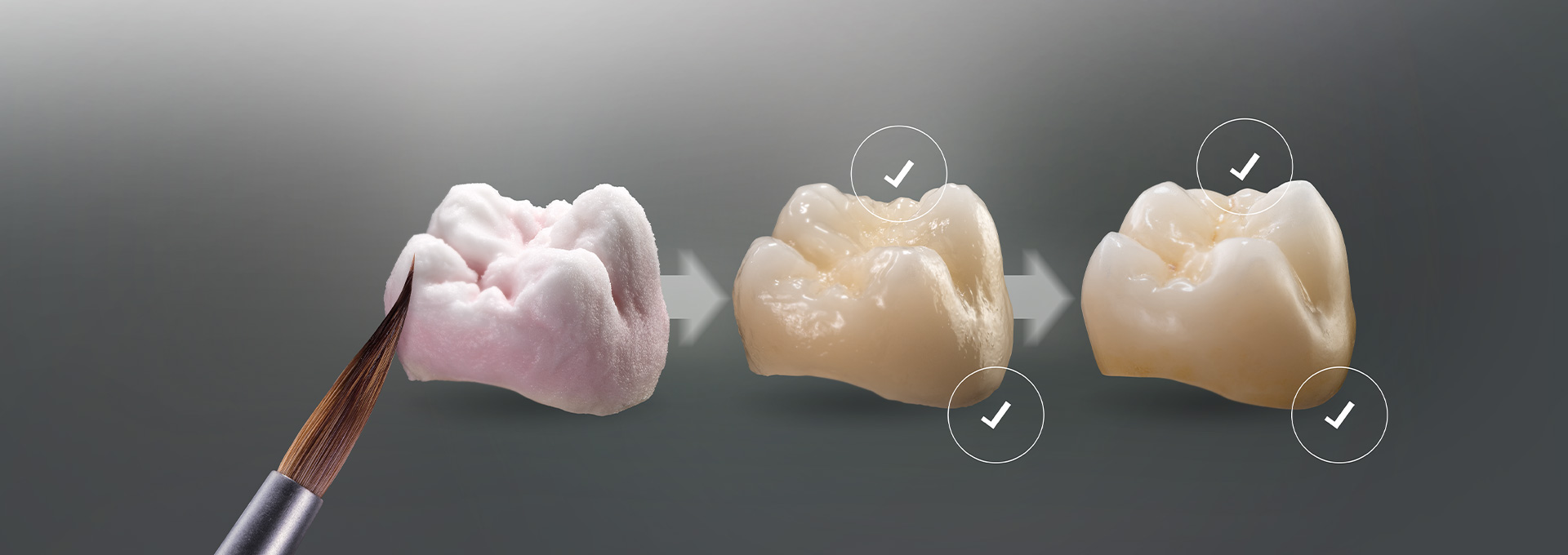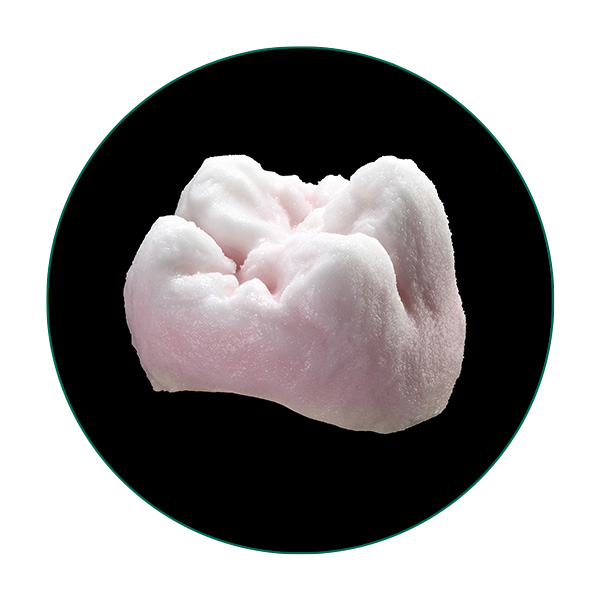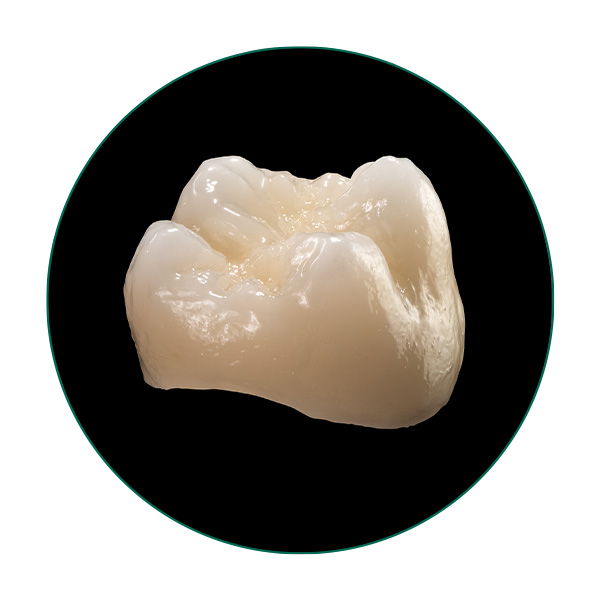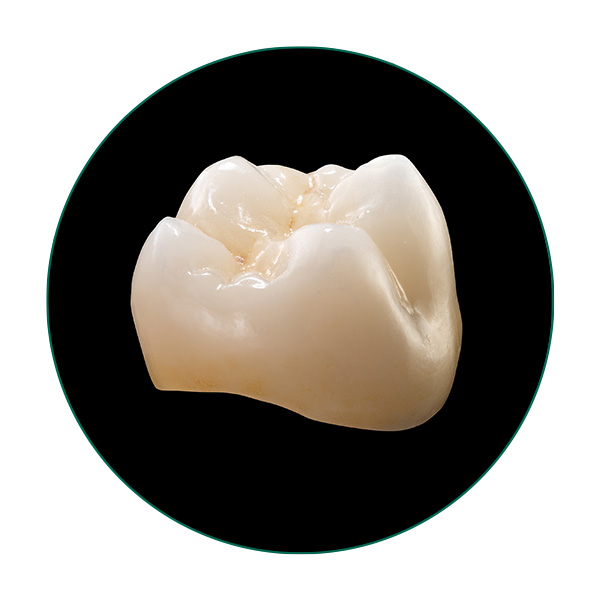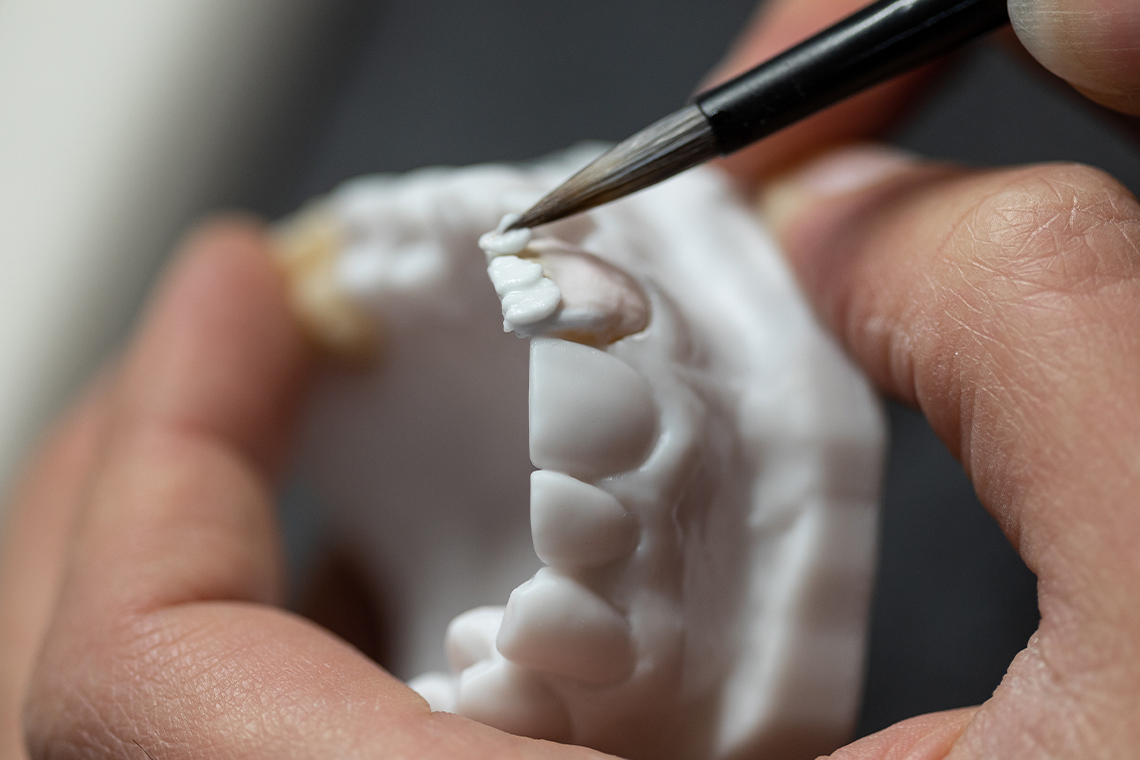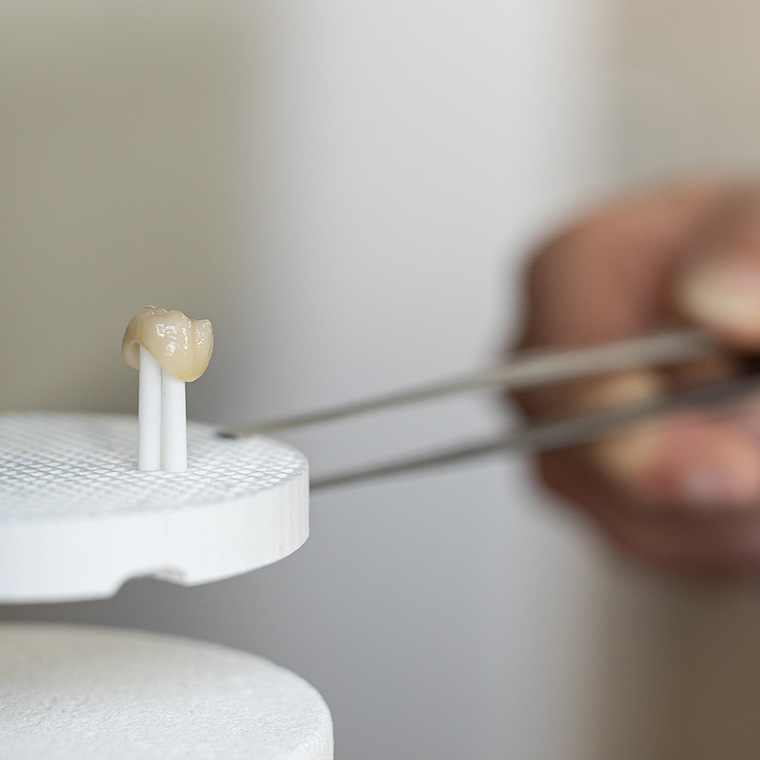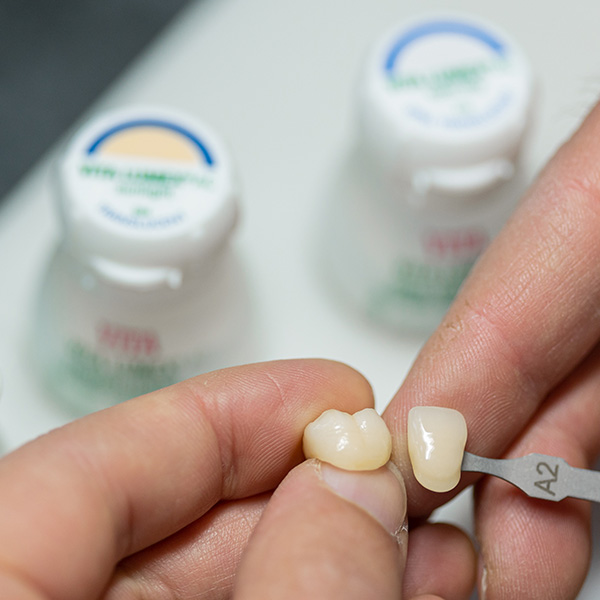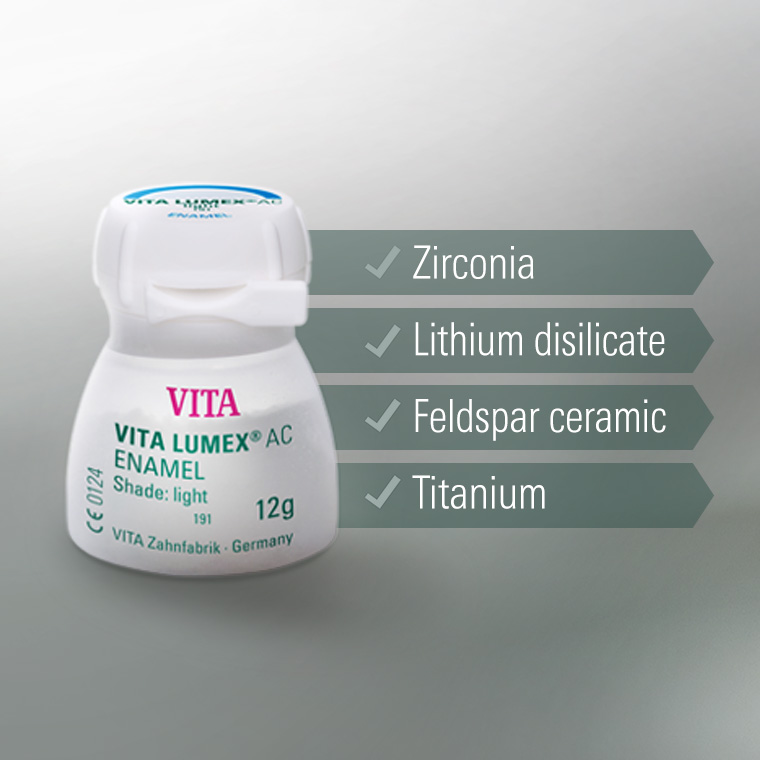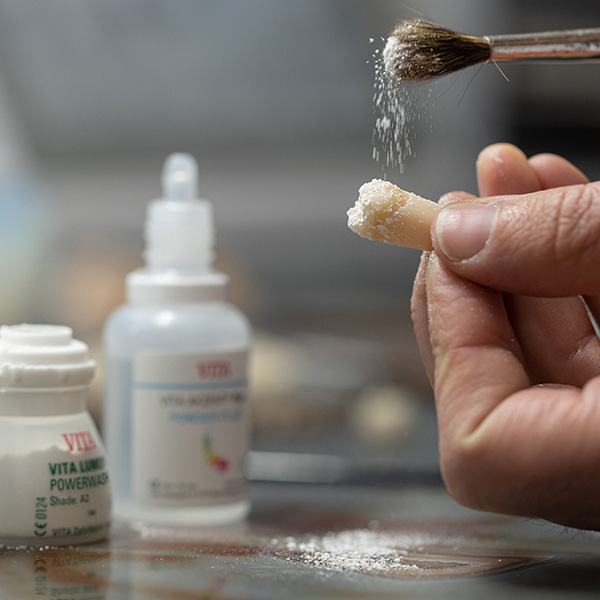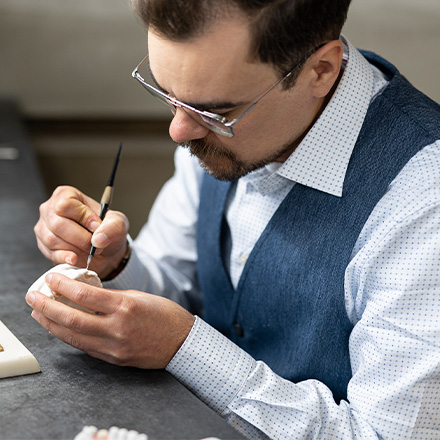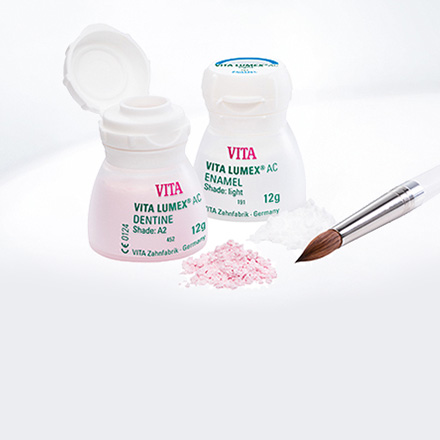It is always exciting to watch when a veneered ceramic restoration moves out of the furnace, step-by-step, during the cooling phase. At this point, you can see whether the contouring can be found in the desired shape and shade effect in the fired ceramic. It's disappointing when the results are not exactly what you had hoped for, in terms of seamless and cost-effective laboratory processes. We have all faced the same scenario - excessive shrinkage has caused the ceramic to lift off the frame, in turn resulting in multiple, costly corrective firings, with the shape and shade ultimately compromised. Is it time for a new veneering ceramic?
Our answer is yes and we explain why the leucite-reinforced, glass-ceramic veneering system VITA LUMEX AC delivers the restorative results you are looking for directly out of the furnace. Discover the economic benefits that the formula and handling process can provide as well.

